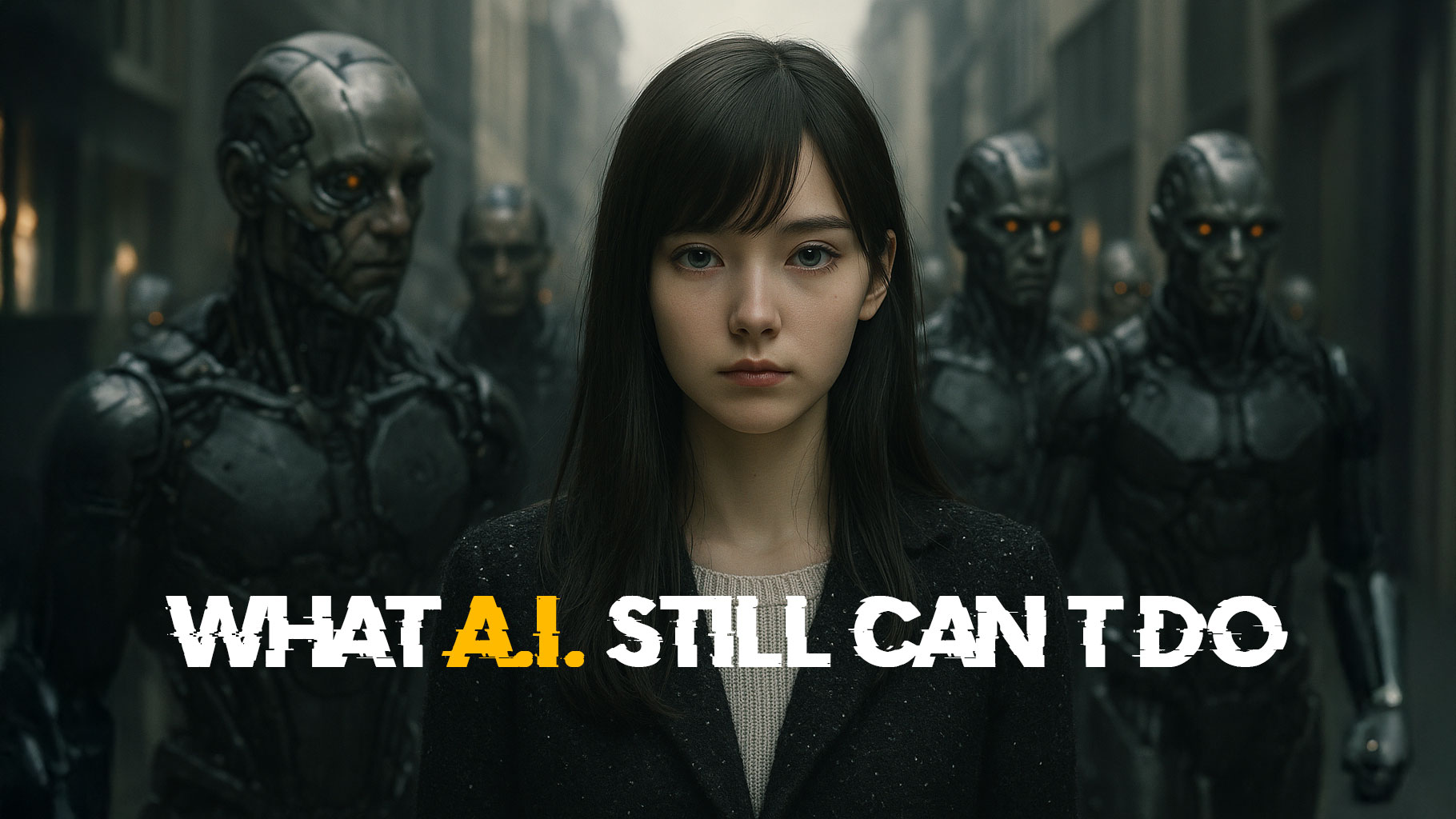
The Art of Tomorrow: What Are the Applications of Stable Diffusion Models?
Imagine having a magic wand that turns thoughts into visuals, ideas into animations, and dreams into designs; that’s the essence of what these Stable Diffusion models do. They’re not just algorithms tucked away in the digital ether but powerful tools reshaping industries from film to fashion, gaming to graphic design. These are just some of the applications of Stable Diffusion Models.
Gone are the days when creating stunning visuals or immersive experiences required endless hours of manual labor. Now, with a bit of coding magic and a creative prompt, you can conjure up anything from ethereal concept art to dynamic animations that were once the domain of skilled human hands. This isn’t about replacing human concepts but amplifying it, pushing the boundaries of what’s possible and opening up new ways to re-imagine things we couldn’t do before.
Imagine a filmmaker sketching out scenes not on paper, but through code, transforming script lines into visual spectacles with the ease of typing out a sentence. Or a fashion designer draping their models in fabrics that haven’t been woven yet, exploring patterns and colors that defy conventional limitations. This is the world stable diffusion models are ushering us into—a place where the barriers between imagination and reality blur, and the only limit is what you can dream up.
What Are the Applications of Stable Diffusion Models?
In this blog post, we will explore what the applications of Stable Diffusion Models are, how they work, and what they can do for you. We will also show you some examples of amazing images generated by Stable Diffusion Models, and how you can try them out yourself. Whether you are an artist, a student, a gamer, or just curious, you will find something to inspire you in this post. Keep reading.
Art and design:
Stable Diffusion Models can create original artworks, logos, icons, illustrations, animations, and more, based on the user’s preferences and specifications.
Education and research:
Stable Diffusion Models can be used as a tool for learning and exploring different topics, such as biology, chemistry, physics, history, geography, and more.
Entertainment and media:
Stable Diffusion Models can create engaging and immersive content for games, movies, comics, books, and more, using natural language or other modalities.
Table of Contents
Film and Animation with Stable Diffusion
In the film and animation industries, the integration of AI technologies like Stable Diffusion is changing traditional processes, making way for more innovative and efficient production methods. We can see it happening in the ComfyUI community. Here’s an expanded view on how these technologies are applied, including green/blue screening replacement, 3D animation enhancement, AI-generated characters, and digital actors.
Some of the benefits of using Stable Diffusion Models for film and animation are:
Creativity and diversity:
Stable Diffusion Models can generate a variety of styles and scenes that may not be easily achievable by traditional methods. For example, you can create animations of fantasy creatures, futuristic landscapes, abstract art, and more, using just a few words or an image as a starting point.
Efficiency and convenience:
Stable Diffusion Models can save time and resources by automating the animation process and reducing the need for manual editing and rendering. For example, you can use AnimateDiff, a video production technique that can turn any text prompt into a video using a Stable Diffusion model. Animation in 2024 is going to be very big for generative art in general, with Tiktok announcing Boximator.
Interactivity and personalization:
Stable Diffusion Models can allow users to interact with and customize the generated animations and videos according to their preferences and feedback. For example, you can use ControlNet, a control module that can influence the Stable Diffusion model to produce animations that follow a reference video or a specific motion.
In the following sections, we will list some future applications of Stable Diffusion Models to create animations and videos:
1. Green/Blue Screening Replacement
AI can streamline the process of green or blue screen compositing, traditionally used to replace backgrounds. Instead of manual keying, which can be time-consuming and requires meticulous attention to detail to avoid artifacts like edge halos, AI algorithms can automatically distinguish between foreground subjects and the green/blue background, even in challenging conditions such as fine hair details or reflective surfaces. This not only speeds up the post-production process but also enhances the quality of the composite by improving edge detail and integration.
2. 3D Animation Enhancement
In 3D animation, AI is used to enhance textures, lighting, and animations, making them more realistic. For instance, AI-driven algorithms can generate high-resolution textures from low-res images or real-world photographs, apply sophisticated lighting effects that mimic real-world physics, or even interpolate additional frames in an animation sequence to create smoother motions. Furthermore, AI can assist in rigging and weight painting by suggesting or automatically applying weights to different parts of a model based on its geometry and intended movement, significantly reducing the workload on animators.
3. AI-Generated Characters and Digital Actors
AI-generated characters and digital actors are becoming increasingly sophisticated, capable of delivering performances that are growing closer to those of human actors. These characters can be generated from scratch or modeled after real individuals, complete with realistic facial expressions, movements, and even emotional responses, driven by AI algorithms. This technology not only allows for the creation of entirely new characters but also the digital resurrection of historical figures or deceased actors for use in new productions.
Digital actors, powered by AI, are used in both live-action films and animations to perform tasks that might be too dangerous, expensive, or impossible for human actors. They can also be used to maintain the younger appearance of aging actors across a series or franchise. The technology involves capturing the performances of human actors using motion capture technology and then using AI to enhance or modify these performances digitally.
The transition from 2D to 3D animation was a significant evolution in the film and animation industry, introducing an entirely new pipeline production. Similarly, the integration of AI, particularly through diffusion models like Stable Diffusion, represents the next step in this change, potentially reshaping the creative industry from “3D to AI.”
Graphic Design with Stable Diffusion
1. Graphic Design
For graphic design, Stable Diffusion can be utilized to create a wide range of elements, such as logos and character designs. The process involves preparing an input image, configuring the AI with specific prompts and settings, and then refining the generated images using tools like Photoshop for final touches. This method has been effectively used to create detailed and personalized designs.
2. Logo Design
In logo design, Stable Diffusion streamlines the creation process by allowing designers to start with basic sketches or text descriptions and then generate a variety of design options. This includes setting up the right checkpoints, creative prompts, and image dimensions to produce high-quality logos. Designers can also leverage ControlNet and specific settings to enhance logo clarity and creativity, extending the capabilities of Stable Diffusion beyond simple logo creation to generating a wide array of graphic artwork
3. Unique Textures, Patterns, Layouts
Designers can use Stable Diffusion to generate novel textures, patterns, and shapes that defy manual creation. These elements can enhance visual compositions. Stable Diffusion Models can create beautiful and unique fonts and layouts for posters, flyers, banners, magazines, and more, using text or images as inputs.
4. Motion Graphics
Enhancing Motion Graphics with Stable Diffusion
Conceptualization and Ideation:
Just as with logo design, Stable Diffusion can significantly speed up the conceptualization phase for motion graphics. Designers can input text descriptions of the visual style, mood, or elements they envision, and Stable Diffusion generates static images or frames that align with these concepts. This rapid ideation allows for exploring multiple creative directions without extensive manual effort.
Dynamic Visual Asset Creation:
Beyond static images, designers can experiment with generating sequences of images that, when compiled, create animations or motion graphics. By adjusting the prompts and settings, Stable Diffusion can produce variations of a visual theme or progression, which serves as the basis for animated sequences.
ControlNet and Animation:
For more refined control over the generated content, designers can use tools like ControlNet within Stable Diffusion to dictate specific movements or transformations in the visual assets. This might involve generating frames that show a character or object moving across a scene or changing shape, which can then be edited and sequenced together using traditional motion graphics software.
Enhancing Creativity and Efficiency:
The ability to quickly generate and iterate on visual ideas with Stable Diffusion extends the creative capabilities of motion designers, allowing them to experiment with complex animations that would be time-consuming to create manually. This not only speeds up the production process but also opens up new possibilities for creative expression within motion graphics.
Integrating AI-Generated Assets into Professional Tools:
The assets created with Stable Diffusion can be exported and further refined in professional motion graphics software like Adobe After Effects, Blender, or Cinema 4D. This integration ensures that the AI-generated content can be seamlessly incorporated into larger projects, benefiting from additional effects, compositing, and editing to achieve the final vision.
Gaming Applications with Stable Diffusion
Stable Diffusion is increasingly being utilized in the gaming industry to revolutionize various aspects of game development, including asset creation, conceptualization, and enhancing gaming experiences through generative art. Here’s how developers in the game industry are leveraging generative art and Stable Diffusion [Andreeseen Horrowitz] :
1. Game Asset Creation
Stable Diffusion and other generative AI models are being used to create detailed 2D and 3D game assets. This process involves generating everything from character designs to environmental textures, significantly reducing the time and effort required in traditional asset creation. For example, tools like Kaedim, Mirage, and Hypothetic are focusing on solving the 3D model creation problem by enabling image-to-3D and text-to-3D conversions, which can be integrated into game development pipelines.
2. Concept Art Development
Generative AI tools excel at ideation, helping game designers and non-artists to quickly explore concepts and generate concept artwork. This accelerates the concept art process, enabling studios to produce images in a single day that previously would have taken weeks. Designers can use Stable Diffusion to explore different ideas, generate inspiring images, and then work with concept artists to refine these into coherent pieces of art for game development.
3. Enhancing Game Engines with AI
While specific examples of game engines using AI generative art to produce animations are still emerging, the potential for integration is vast. AI could allow for real-time generation of environments or character animations based on game dynamics or player interactions, offering a more immersive and dynamic gaming experience. Although direct examples are in early development, the industry is actively exploring how to fully leverage AI in game engines for these purposes.
4. Streamlining Production Pipelines
Generative AI models, deeply integrated into production pipelines like Unity or Unreal, can automate repetitive tasks, enhance creative processes, and even generate new content on the fly. This integration not only speeds up game development but also opens up new creative possibilities, making the development process more efficient and cost-effective.
Asset creation:
Stable Diffusion can generate high-quality game assets, such as characters, environments, objects, and items, based on the user’s specifications and preferences. This can save time and resources, as well as enable more creative and diverse visual concepts.
Animation and video:
Stable Diffusion can also create stunning and realistic animations and videos from text prompts or other inputs, such as images or audio. This can enhance the storytelling and immersion of games, as well as allow users to interact with and customize the generated content.
Game design and prototyping:
Stable Diffusion can help game developers test and iterate their game ideas faster and easier, by creating realistic prototypes within minutes. This can lead to faster development cycles and more informed decision-making.
Marketing and Advertising with Stable Diffusion
Stable Diffusion is being increasingly utilized in marketing and advertising to create highly adaptable and personalized visuals, revolutionizing the way brands engage with consumers. The technology’s ability to generate images from textual descriptions allows for the rapid creation of diverse marketing materials, including product images, advertisements, and even conceptual art for campaigns. For example, marketers can generate photorealistic images tailored to specific promotional needs, such as showcasing products in various settings or creating compelling ad visuals that resonate with target audiences.
Generative AI, including Stable Diffusion, is transforming the advertising industry by introducing dynamic visuals that can morph in response to viewers’ preferences, trends, or locations. This enables advertisers to deliver more personalized content, significantly enhancing customer engagement and the effectiveness of marketing campaigns. Notable examples of brands leveraging generative AI include Heinz, Coca-Cola, and Lay’s, which have used the technology to create customized and interactive campaigns that deepen consumer connections with their products.
The application of generative AI in marketing also addresses several strategic goals, such as accelerating the development of marketing materials and personalizing customer interactions. Marketing departments are identified as early adopters of generative AI tools, which are already being used to enhance customer service, sales, and content personalization. Despite potential risks associated with data safety, copyright issues, and brand integrity, the benefits of integrating generative AI into marketing strategies are compelling. Companies that adopt these technologies early may gain a competitive edge in innovation and attract top talent in data science and engineering.
Product image generation:
Stable Diffusion can create high-quality and eye-catching product images for e-commerce, catalogs, social media, and more, based on the user’s specifications and preferences.
Content creation and optimization:
Stable Diffusion can create engaging and personalized content for campaigns, websites, blogs, newsletters, and more, using natural language or other modalities.
Market research and analysis:
Stable Diffusion can help marketers understand and predict customer behavior, preferences, and trends, by generating and analyzing data and images.
Product Design with Stable Diffusion
Why use Stable Diffusion for product design?
Stable Diffusion can be a valuable tool for product design, as it can help you with:
- Ideation: you can use Stable Diffusion to generate a variety of images based on your product concepts, and explore different possibilities and alternatives. You can also use it to inspire new ideas, by providing vague or abstract inputs and seeing what Stable Diffusion produces.
- Prototyping: you can use Stable Diffusion to create realistic and detailed prototypes of your product, without the need for expensive or time-consuming physical or digital modeling. You can also use it to test different features, colors, styles, and layouts of your product, by changing the text input accordingly.
- Validation: you can use Stable Diffusion to validate your product ideas with potential users, by showing them the generated images and collecting their feedback. You can also use it to compare different versions of your product, and measure their performance and appeal.
What are the benefits and challenges of using Stable Diffusion for product design?
Using Stable Diffusion for product design has some benefits and challenges, such as:
- Benefits:
- It can save time and money, as it can generate realistic and diverse images in minutes, without the need for expensive or complex tools or skills.
- It can enhance creativity, as it can produce unexpected and novel images, and inspire new ideas and directions.
- It can improve communication, as it can provide a common visual language and reference for product designers, developers, users, and stakeholders.
- Challenges:
- It can be unpredictable and inconsistent, as it can generate images that are not aligned with the text input, or that vary significantly across different runs or models.
- It can be biased and inaccurate, as it can generate images that reflect the limitations or prejudices of the data or model that it is trained on, or that omit or distort important details or features.
- It can be unethical and illegal, as it can generate images that infringe on intellectual property rights, privacy rights, or moral standards, or that cause harm or offense to individuals or groups.
Fashion Design with Stable Diffusion
1. Revolutionizing Design and Visualization
Stable Diffusion’s ability to turn sketches into high-quality, realistic images is a game-changer for fashion designers. This technology enables the rapid visualization of designs, allowing creators to see their ideas come to life in real-time and with incredible detail. Designers can experiment with various concepts without the need for physical prototypes, significantly speeding up the creative process and fostering greater innovation. Projects like NEWFACET have showcased the potential of AI in generating highly realistic and imaginative fashion pieces, demonstrating how Stable Diffusion can push the boundaries of creativity and exploration in fashion design.
2. Impact on E-commerce and Social Media
The implications of Stable Diffusion extend beyond design creation to reshape e-commerce and social media marketing. By generating detailed previews of fashion items before they are produced, customers can explore and interact with products in a virtual space. This capability enhances the online shopping experience, making it more engaging and immersive. It opens up possibilities for new forms of product tagging on social media, where AI-generated fashion could be tagged for direct purchase, blending content creation with e-commerce seamlessly
3. The Future of Shopping and Content Marketing
Platforms like Shopify, integrating with Stable Diffusion, hint at a future where online shopping is deeply personalized and interactive. Customers might upload their photos to try on outfits virtually, merging the convenience of e-commerce with the personal touch of in-store shopping. This not only enhances the customer experience but also opens up novel avenues for content marketing within the fashion industry, where brands could offer unique AI-generated fashion content to engage customers.
Product image generation:
Stable Diffusion can create eye-catching product images for e-commerce, catalogs, social media, and more, based on the user’s specifications and preferences.
Content creation and optimization:
Stable Diffusion can create engaging and personalized content for campaigns, websites, blogs, newsletters, and more, using natural language or other modalities.
Market research and analysis:
Stable Diffusion can help marketers understand and predict customer behavior, preferences, and trends, by generating and analyzing data and images.

Imagine for a moment, stepping beyond the border of the familiar, into a world where the transformative power of artificial intelligence meets the fashion industry in a dance-off of design and tech. It’s a domain where the brush strokes of technology paint a vivid picture of style, bursting with potential. This crossover of seemingly disparate…

The concept of censorship on social media platforms has always been a controversial issue. While necessary for ensuring a safe and appropriate environment, it can often detract from the overall user experience, leading to frustrating experiences such as scrolling through endless streams of blurred out images. This is why gamifying censorship can change the way…
Understanding Stable Diffusion:
- What is Stable Diffusion?
- Is Stable Diffusion real?
- What do steps do in Stable Diffusion?
- What is the latest Stable Diffusion?
- How many people use Stable Diffusion?
- Is Stable Diffusion easy to use?
- What is similar to Stable Diffusion?
- What is Stable Diffusion style?
- How does Stable Diffusion training work?
- Is Stable Diffusion Pretrained?
- Can Stable Diffusion generate 3D models?
- How do you use Stable Diffusion at home?
- What is the new version of Stable Diffusion?
- What are the applications of Stable Diffusion?








Leave a Reply